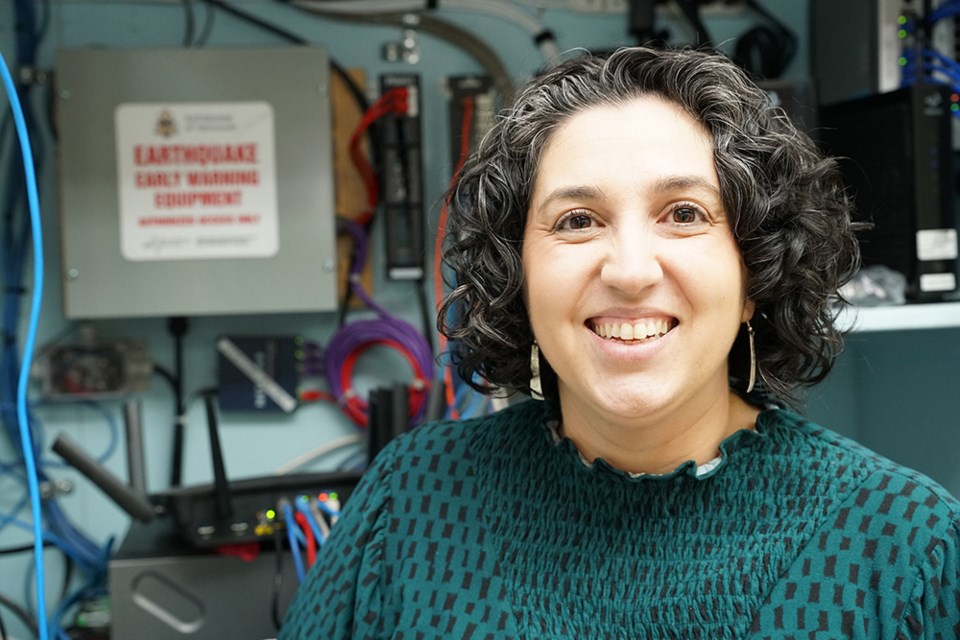While an announcement has been made that the first sensor for Canada’s earthquake monitoring system is being installed at Horseshoe Bay, Assumption School has had a seismic sensor in place for several years.
The Horseshoe Bay sensor will be among hundreds that will eventually give Canadians extra seconds to prepare for a major earthquake. Because of a sensor buried in the Assumption playing field, the school is part of a network that has been established by the University of British Columbia (UBC) to monitor seismic activity, and which gives the school real time feedback should the ground start to shake.
Acting principal Angela Bennett said recent news coverage of the Horseshoe Bay installation made it sound like the sensor would be the first ever in the region, but it’s not.
Mark Watson, who teaches grade seven and eight students, said UBC’s earthquake engineering research facility installed the equipment. Watson said he does not remember the exact year the system was put in place, but he thinks it was 2016.
“At that time, they put two sensors in our field, and they are buried about two metres deep,” said Watson. “They are hardwired into our school’s computer network, where it is connected to UBC through the internet. They do come to maintain it once a year.”
Watson said all Catholic schools in the Vancouver archdiocese have these systems in place. The school funded the installation of the system.
“Apparently, UBC, to make this program work, needed an organization and the archdiocese partnered with them,” said Watson. “If we detect something, it goes to UBC, [the university] checks the type of activity, determines if it matches what’s necessary, and then sends the alarm off to everybody. The only time I know it ever went off was a few years ago during spring break. There was an earthquake near Victoria. The whole system went off to warn everybody.”
Watson said the system can provide anywhere from 15 to 90 seconds of warning. It not only sounds in the school, but it also sounds in Assumption church and its rectory.
Bennett said the alarm is loud, like an air raid siren.
Watson said the system does not need to detect seismic activity just at Assumption for the alarm to go off. Anywhere in the system can trigger the alarm.
Bennett said the school practices earthquake drills several times per year. They have to be practiced three times in a school year, she added.
One time during the year, the school participates in the BC ShakeOut, which is where the whole system is formally tested. For the current school year it was held on October 20, 2021, and millions of people worldwide practiced drop, cover and hold on drills.
“The kids go under their desks or into the doorway, depending on where they are located,” said Bennett. “When it’s all clear, that’s when we go outside. Each class has an earthquake emergency kit with water bottles, band-aids, emergency blankets and the kids are trained to bring those out with us.”
Bennett said the UBC program connection provides an added layer of security for the school in that they get warning time.
Watson said having the system in place is kind of like insurance.
“I want to have it, but I don’t ever want to use it,” he added. “I’d prefer that alarm never, ever goes off, but if we need it, it’s there.”



